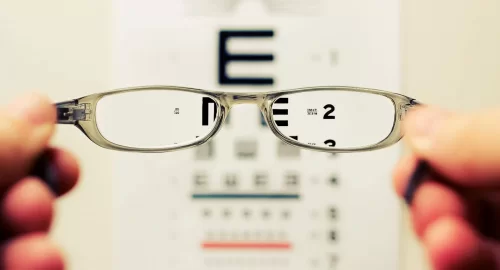
2050, 50% of the global population will have glasses: experts warn

Multimedia
- 1-05-2024, 08:38
INA- SOURCES
Smartphones, tablets, hours spent on books or in front of a drawing pad: these are all activities that are part of the daily life of many children. But they could also be one of the main causes of the dramatic increase in cases of myopia globally. Experts are sounding the alarm: if we don't change our habits, by 2050 one in two people will need glasses and corrective lenses. But all is not lost: here is what the latest research says on how to prevent and slow down the advance of this "blind fury".
A silent epidemic
Myopia (difficulty seeing distant objects clearly) is becoming increasingly common. According to estimates by optometry researchers, if the current trend continues, about half of the global population will need glasses by 2050, up from 23% in 2000 and less than 10% in some countries.The associated healthcare costs are enormous. In the USA, spending could be as high as $7,2 billion per year. In Europe we are already at €4000 of public spending per capita. An economic avalanche of glasses, tests and treatments. But what explains this rapid growth in myopia?
Too much “close work” and not enough time outdoors
Two recent studies, involving large surveys of children and parents, provide strong support for the idea that an important factor in the increase in myopia is that people spend more time focusing on objects immediately in front of our eyes, whether it's a screen, a book or a drawing pad. The more time we spend focusing on something within arm's reach of our faces, so-called “near work,” the more likely we are to end up with glasses.Why is the “glass tsunami” increasing so rapidly?
Globally, much of this increase is due to the rapid development and industrialization of East Asian countries over the last 50 years. Younger people began to spend more time in classrooms reading and focusing on other objects very close to their eyes and less time outdoors.
Countries in Western Europe, North America and Australia have also shown increased rates of myopia in recent years, but nothing comparable to what has recently been observed in China, Japan, Singapore and some other East Asian countries .
How to prevent and treat myopia
Fortunately, just a few minutes a day with glasses or contact lenses that correct blurred vision is enough to stop the progression of myopia. This is why early vision tests and vision correction are important to limit the development of myopia.
The foolproof ways to counteract or delay these effects are those already mentioned: spend less time focusing on objects close to your face, such as books and smartphones, and spend more time outdoors in bright, natural light. Since the first tip is difficult to follow in our modern age, your best bet is to take frequent breaks or perhaps spend more time reading and scrolling outside in the sun.
Let's put on pink glasses: the future of myopia is worrying, but not without hope
Let's start with the bad part: half the world will need glasses in less than 30 years, and it will be even worse in the following 20 years. The surge in myopia cases will likely have its worst effects between 2060 and 2070. It takes time for young people diagnosed with myopia now to experience the most severe vision problems.
And the good news? One, but a big one: we can act now to reverse this trend. By promoting a lifestyle that includes less close-quarters activity and more time outdoors, especially for children, we can hope to slow down this “silent epidemic.” And with regular eye checks and a pair of glasses fitted in time (the only way to remove them later), we can ensure that future generations do not have to face the most serious consequences of this ever-increasing visual disorder.
Myopia may be one of the most underappreciated public health challenges of our time. But with proper awareness, prevention and treatment, we can still hope to see a clearer future. Literally.
SOURCE: Futuro Prossimo
Bayer Leverkusen wins the German League
- Sport
- 08:38
Security operations around Baghdad are initiated by BOC
- Security
- 24/05/13
Iraq , Tunisia sign bilateral agreements in several areas
- politics
- 24/05/12












